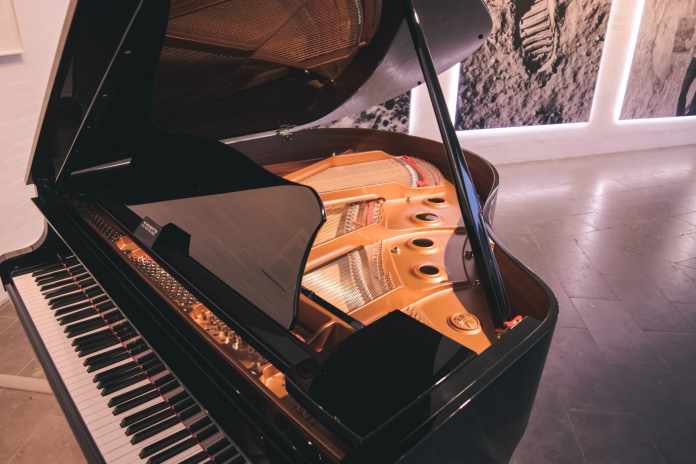If you are a Piano owner, then you know that moving it can be quite difficult. It’s not just about getting the Piano from one room to another but also figuring out how to get it up and downstairs. Don’t worry – this blog post is here to teach you exactly what needs to happen for your move to go smoothly! We will first cover the basic steps of moving a piano before breaking them into more specific tasks:
Content Summary
Decide where the new location will be for your Piano
The first step to moving a piano is deciding where you would like it placed in the new location. If you already know that, this will be an easy task – make sure there is enough room and remember not to block off any doors or hallways with the furniture!
If you are still considering your options for placement of the Piano, here are some things to keep in mind:
- What area do I want my Piano in? Living Room, Dining Room, Kitchen, etc.? Have a clear idea beforehand not to waste time trying out multiple places when they may all have too much traffic flow around them. – Is there sufficient space? One thing people often forget about is whether or not there is enough room for the Piano. Be sure not to block off any doors or hallways with furniture – if you need that space, it’s best not to move things around too much.
- Will I be able to keep my Piano upright? If you’re using a moving company and they are going on stairs, this may pose a problem. Make a note of whether there is an elevator in the building before deciding where your Piano will go!
Selecting a day and time for the move
The next step is to select a day and time for the move. Keep in mind that you may have other things going on during this time, so be sure you find an appropriate date/time slot!
Once you’ve selected your desired days, set up with the moving company to meet them at your house at least a few hours beforehand if they need to pack anything (make a note of whether or not there are any stairs involved), if it’s just the Piano itself, then all they’ll need from you is access into your home.
Try not to schedule the move on a day that is busy with other activities – it will make things go much more smoothly and may end up saving you money!
Preparing the Piano for the Move
Now that you’ve decided where and when the move will happen, it’s time to start preparing your Piano.
The last thing you want is something to go wrong with your Piano because of a simple oversight! Be sure to do this step well in advance before the move date, so there are no surprises:
- Clean off all dust from the exterior of the instrument – if there is any liquid on or around it, be careful not to let them seep into cracks as they may damage surfaces inside. Use caution and never use water on Electric Pianos unless instructed by the owner manual
- Gather all necessary items such as blankets, bubble wrap, foam peanuts (if needed), etc. and store them in one place out of the way
- Check the area your Piano will be placed for any potential obstructions such as furniture, doorways, or windows.
- If there are stairs that have to be climbed to get the Piano into its new location, please consult with a professional on how best to do this safely and efficiently!
Finding a Piano Moving Company
Now that you’ve read through the steps and have a plan of attack, it’s time to find a Piano Moving Company! Thankfully there are many around and you can find piano movers at https://pianomoversnearby.com/, so the process is not hard. The first step would be to figure out which company will best suit your needs – this may involve taking into account how much space they offer, their customer service reputation or whether they can transport other items as well. Once you’ve narrowed down who might work for you, then set up an appointment with them by phone to make sure everything goes smoothly on moving day!
When meeting with these people (and any others involved during the move), it’s important to get acquainted beforehand, so there are no surprises come moving day; don’t just show up and hope for the best.
Transporting the Piano with Care
- Prepare your vehicle (if you’re not using a professional moving company)
- Make sure there is enough room in the vehicle for both people and furniture – if this isn’t possible, then make a note to find alternative transportation for anything that won’t fit.
- Ensure all necessary tools are on hands, such as straps or ropes, to secure it if needed!
- If you will be transporting the Piano by yourself, be sure to plan ahead of time how best to carry it while going upstairs – do not just lift it from its side or front because they are very top-heavy and can topple over easily. It’s better instead to use two hands when carrying any large item, so one goes under each arm or use a strap to carry it.
Get help when lifting Piano
Please note that it is best not to move a piano on your own unless you have professional training. In any case, never lift the Piano by its side or front and always use two hands when lifting – this will help distribute weight evenly, so there’s less risk of injury! If lifting from the back, be sure to firmly place both feet to give yourself some extra stability (and keep them close together). If lifting from the top, do not stand directly under it, but instead, step out slightly away for better balance. Remember; if at any time during the process you feel like anything may go wrong, stop immediately and get someone else who has experience with moving pianos!
Conclusion
The process of moving a piano can be complex. There are many steps to consider to move the instrument with care and efficiency, so it is best not to leave these considerations until the last minute! Please take your time researching which company will work for you (and how they operate) before making any commitments. If all goes smoothly on moving day, then you’ll have successfully moved your Piano without incident – but if there’s an issue, don’t hesitate to ask for help from someone who has experience moving pianos. Remember that professionals know what they’re doing because they’ve been trained accordingly; do not attempt this alone unless you too have had training or professional experience!









